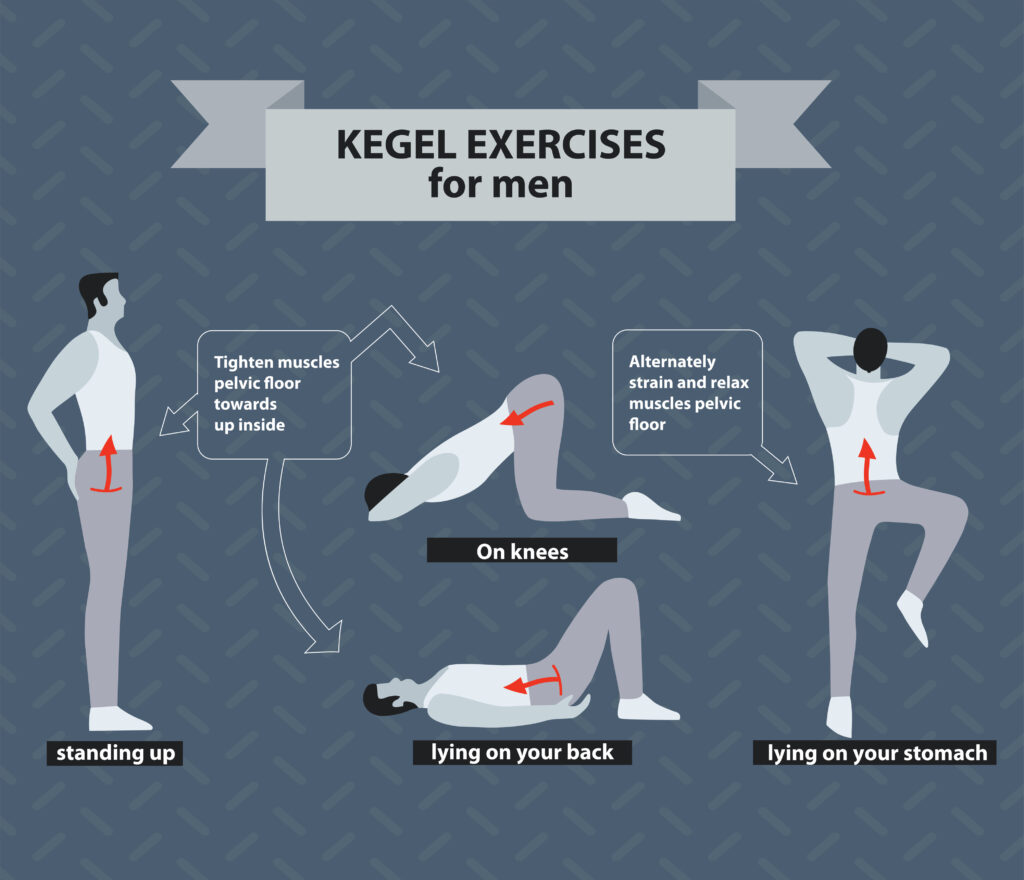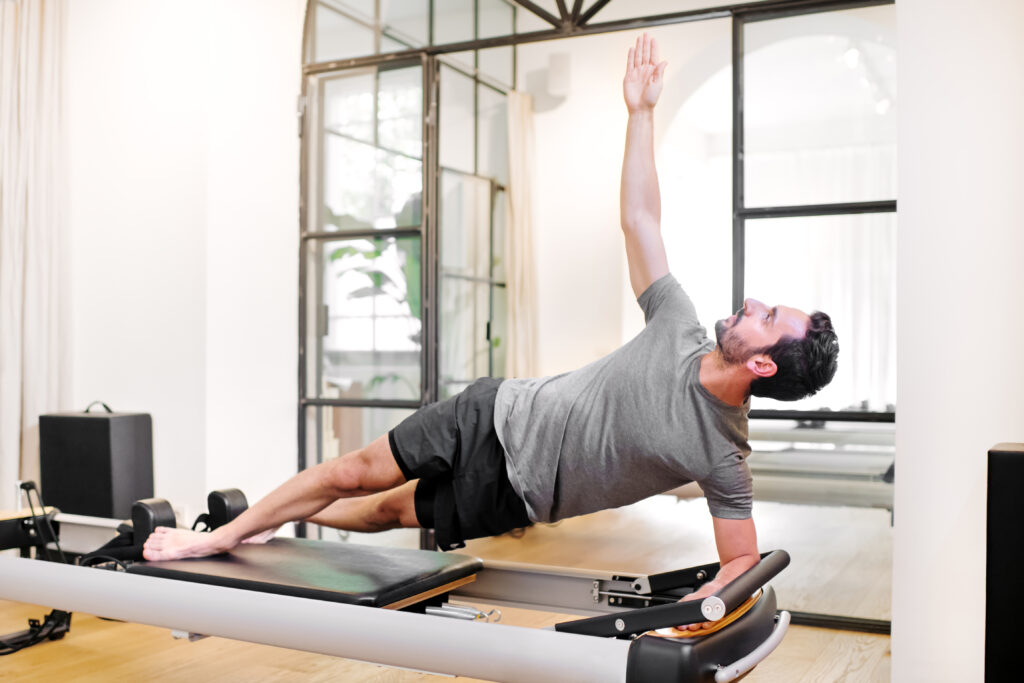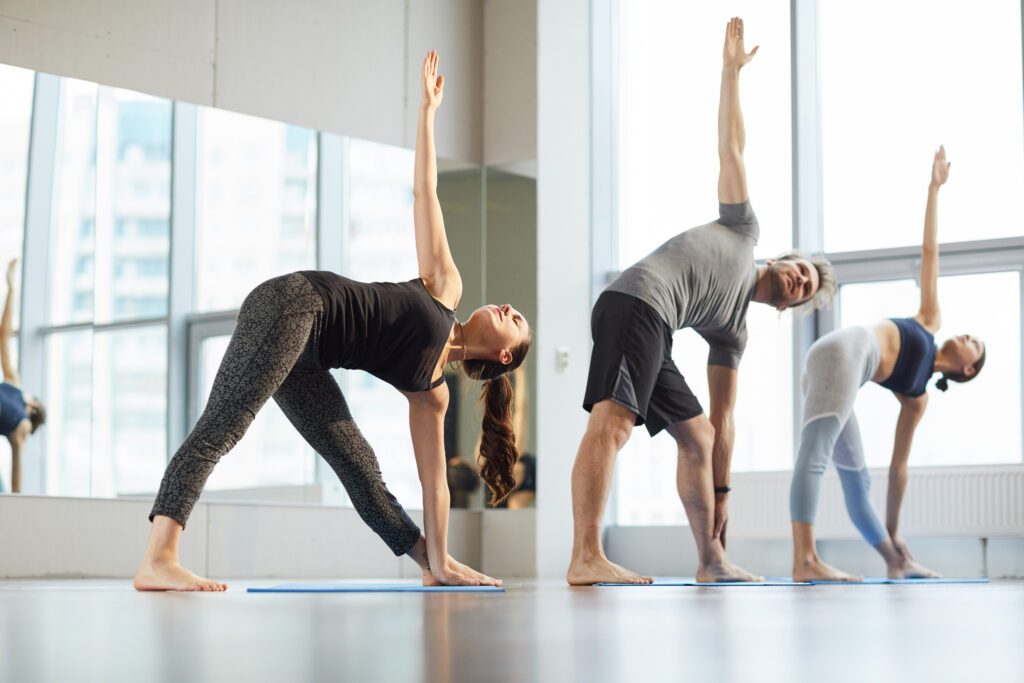Eliminate Erectile Dysfunction With Exercise? It’s Possible–and Worth a Shot
Erectile dysfunction is a condition that affects millions of men worldwide, impacting not only their physical health, but also their emotional well-being and confidence. Men often think their only option to prevent, control, or eliminate erectile dysfunction is through medical erectile dysfunction treatment options—however, that’s not always the case!
While medical treatments are available, integrating regular exercise into one’s routine can significantly contribute to managing erectile dysfunction and promote an overall healthier lifestyle that you’re bound to see the benefits of.
So, if you’re ready to experience life without erectile dysfunction, this post is for you! Keep reading below to learn four types of exercises you should add to your daily routine to fight erectile dysfunction.
What Causes Erectile Dysfunction?
While erectile dysfunction is most common in older men with low activity levels, men of all ages can experience the effects. Here are some of the causes and risk factors to be aware of:
- Obesity
- Alcohol use
- Cardiovascular disease
- Prostate cancer
- Stroke
- Low or decreased levels of activity
- Smoking
If you suffer from erectile dysfunction, following a proper diet and exercising are key to improving your condition.
Exercises to Enhance Erectile Function
Incorporating regular exercise into your routine is crucial in improving erectile function. Here is a list of the top exercises you should add to your fitness routine.
1. Pelvic Floor Exercises
One of the most common and beneficial erectile dysfunction exercises is Kegels, which helps strengthen the muscles in your pelvic floor. When practiced correctly, Kegels are the perfect way to do just that!
In men, Kegels target and strengthen the bulbocavernosus muscle. This muscle allows the penis to fill with blood during an erection, pump during ejaculation, and empty the urethra after urination. By targeting this muscle, you should see longer-lasting and satisfying erections.
If you practice Kegels every day, multiple times a day, you’re bound to notice improvements. The best part is that Kegels can be done anywhere!
Kegels are also known to improve other issues, such as urinary incontinence and other common urinary problems–– all while positively impacting your sex life!
How To Perform Kegel Exercises On Your Own Time
Before jumping into kegel exercises, it’s best to locate the bulbocavernosus muscle. The best and easiest way to do this is by stopping your stream multiple times during urination. The muscle you use to do that is the one you need to target with Kegels. Be sure you aren’t clenching muscles in your buttocks, stomach, or legs instead—you won’t see the same results if so.
To perform basic Kegels, begin by lying, sitting, or standing. Clench the bulbocavernosus muscle and hold for three seconds. Release and repeat three to five times. Repeat this process at least three times daily for the best results.
As your muscle gets stronger, increase your holds from three seconds to five seconds, and so on. Challenge yourself to hold for longer periods. The goal is to hold the muscle for at least ten seconds, five separate times, at least three times a day.

There are also several other pelvic floor exercises to add to your routine. These include:
Super Kegels
- Contract the pelvic muscles and hold for as long as possible (try to aim for 10 seconds or more).
- Relax for the same amount of time.
- Repeat this process 10 to 15 times.
Quick Flicks
- Quickly contract and release the pelvic muscles.
- Do this in rapid succession 10 to 15 times.
Elevator Kegels
- Imagine your pelvic floor muscles as an elevator. Start contracting the muscles slowly (like an elevator going up) and then gradually release them (like an elevator going down).
- Repeat this process 10 to 15 times.
Bridge Exercise
- Lie on your back with your knees bent and feet flat on the floor.
- Lift your hips toward the ceiling, engaging your pelvic floor muscles as you do so.
- Hold for a few seconds, then lower your hips back down.
- Aim for 10 to 15 repetitions.
Squats
- Stand with your feet shoulder-width apart.
- Lower your body into a squat position.
- As you rise back up, squeeze your pelvic floor muscles.
- Repeat 10 to 15 squats.
Inner Thigh Squeeze
- Sit or lie down with your knees bent and feet flat on the floor.
- Place a small ball or pillow between your thighs.
- Squeeze your thighs together using your pelvic floor muscles.
- Hold for a few seconds, then release.
- Repeat 10 to 15 times.
Diaphragmatic Breathing
- Practice deep breathing, focusing on relaxing your diaphragm and engaging your pelvic floor muscles as you exhale.
- This exercise helps coordinate the diaphragm and pelvic floor muscles, promoting better overall pelvic health.
The more you can strengthen this muscle, the better the chances are for you to see results. It is important to remember that effects won’t happen immediately, either. As with any muscle, it will need time to tone and strengthen, so give yourself at least four to six weeks before expecting to see results.
Exercise Tip: If you’re struggling with locating your pelvic floor muscles, think of squeezing the muscles in your anus. This may be an easier way to complete kegel exercises and see results.
Remember, it’s important to consult a healthcare professional or a physical therapist if you need clarification on how to perform these exercises correctly or if you have any underlying health conditions. They can provide personalized guidance tailored to your specific needs.
2. Pilates Exercises

Pilates is a low-impact exercise method renowned for emphasizing core strength, flexibility, and overall body awareness. Practicing regular pilates exercises is also a great way to fight erectile dysfunction. Here are some pilates exercises you can try:
Knee Fallouts
Kegel exercises can be supplemented with knee fallouts. Start by lying on the floor with your knees bent and feet on the ground. Engage your pelvic floor muscles and slowly lower one knee sideways towards the ground. Keep both feet on the floor and only lower your knee as far as it can go while engaging pelvic muscles. Bring your knee back to center and repeat with the other knee. Complete at least five repetitions on each knee, with the goal of building up to 10 repetitions on each side.
Supine Foot Raises
Just like with knee fallouts, begin by lying on the floor with both knees bent and feet on the ground. Engage the pelvic floor muscles and lift one foot straight out into the air, creating a 45-degree angle. Hold this position for a few seconds. Slowly place your foot back on the ground and repeat. Performed for 5 to 10 reps on each side for 1 to 3 sets or until fatigued.
Looking for more information about male health?
- The biggest health concerns to be aware of as you age
- Specific precautions to take as you age to prevent negative health conditions
- Details on how to know whether you’re at a higher risk for a particular health condition
- A handful of quick tips intended to help you maintain your health
Download our free guide, The Man-To-Man Guide On Healthy Aging, where you will learn about:
3. Aerobic Exercises

According to a 2018 study on physical activity’s impact on Erectile Dysfunction, aerobic exercises are proven to fight the effects of the condition if practiced at least four times a week. Exercises should last at least 40 minutes, and you should maintain a steady routine of exercise for at least six months to see improvements.
Some aerobic exercises you may want to try are:
- Boxing
- Rowing
- Cycling
- Running
These exercises will not only help potentially mitigate erectile dysfunction, but they will also improve the risk factors associated with the condition.
4. Yoga

Yoga provides a multifaceted solution to combat the effects of erectile dysfunction. While specific yoga techniques focus on the pelvic floor muscles, there are many other benefits to incorporating yoga into one’s fitness routine. One of its primary benefits is stress reduction. Chronic stress and anxiety can lead to the release of cortisol, negatively impacting sexual function. Yoga’s focus on deep breathing, meditation, and relaxation techniques helps lower cortisol levels, creating a tranquil mental environment conducive to healthy sexual responses.
Furthermore, many yoga postures involve stretching and contracting various muscle groups, promoting better circulation throughout the body, including the pelvic area. This enhanced blood flow ensures optimal oxygenation of tissues, aiding in the relaxation and expansion of blood vessels crucial for achieving and maintaining erections.
When Exercise Doesn’t Do The Trick
While these exercises are known to work for most men living with erectile dysfunction, they aren’t guaranteed to work for every man. When diet and exercise aren’t enough, it’s time to see your urologist.
Here at Urology Specialists of the Carolinas, treating erectile dysfunction is one of our many areas of expertise. We can help you implement a healthy diet and exercise regimen into your daily routine, all while fighting erectile dysfunction with a treatment that works best for you.
Our board-certified urologists are ready to educate, listen, and guide you through the effects of erectile dysfunction. You don’t have to endure a life of suffering—let our team of urologists help you conquer erectile dysfunction once and for all! Schedule an appointment at your local Urology Specialists Center today!
Content was originally published in April 2019 and rewritten in October 2023.
